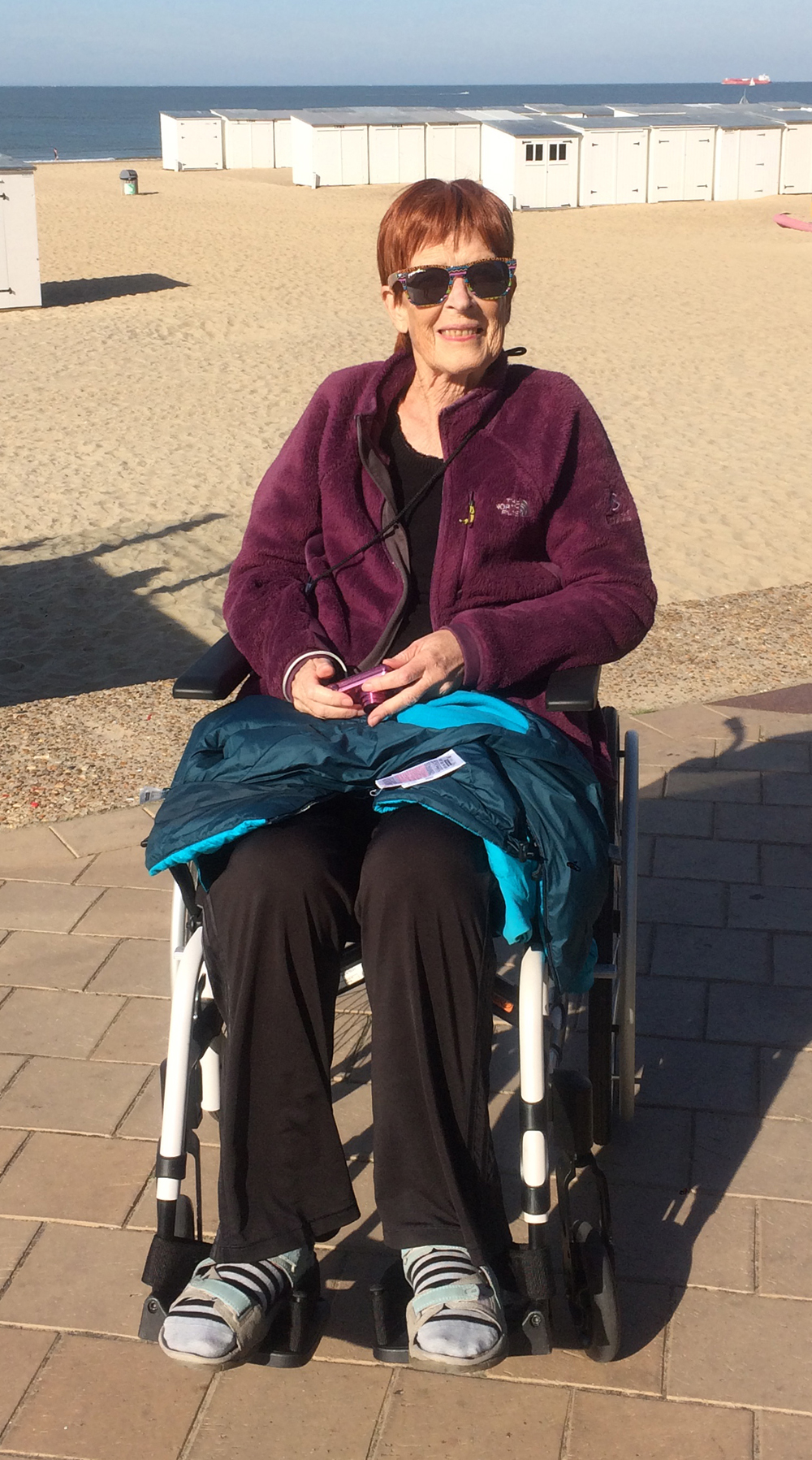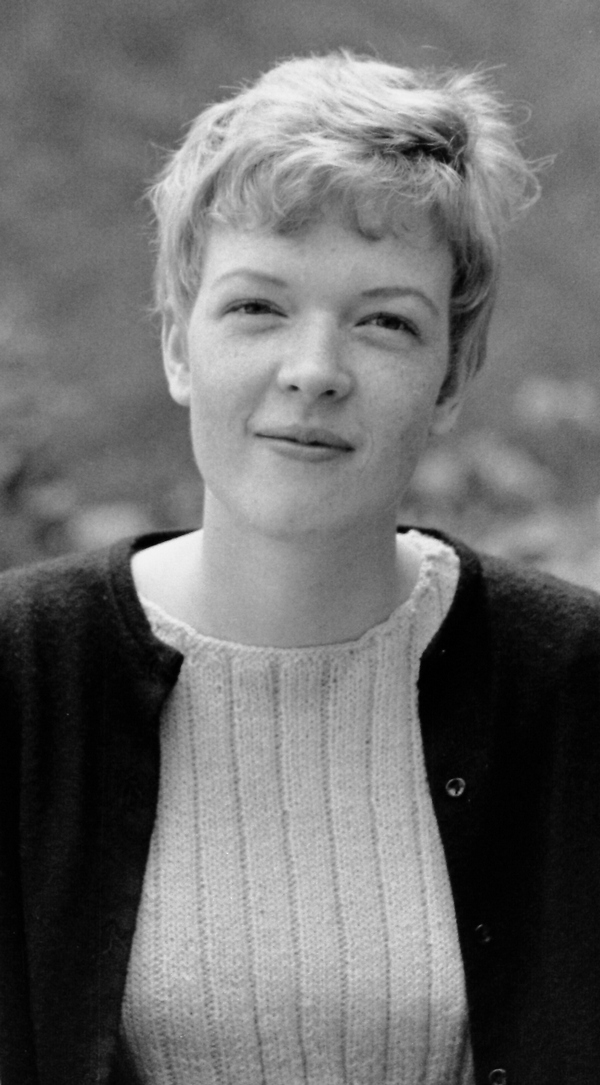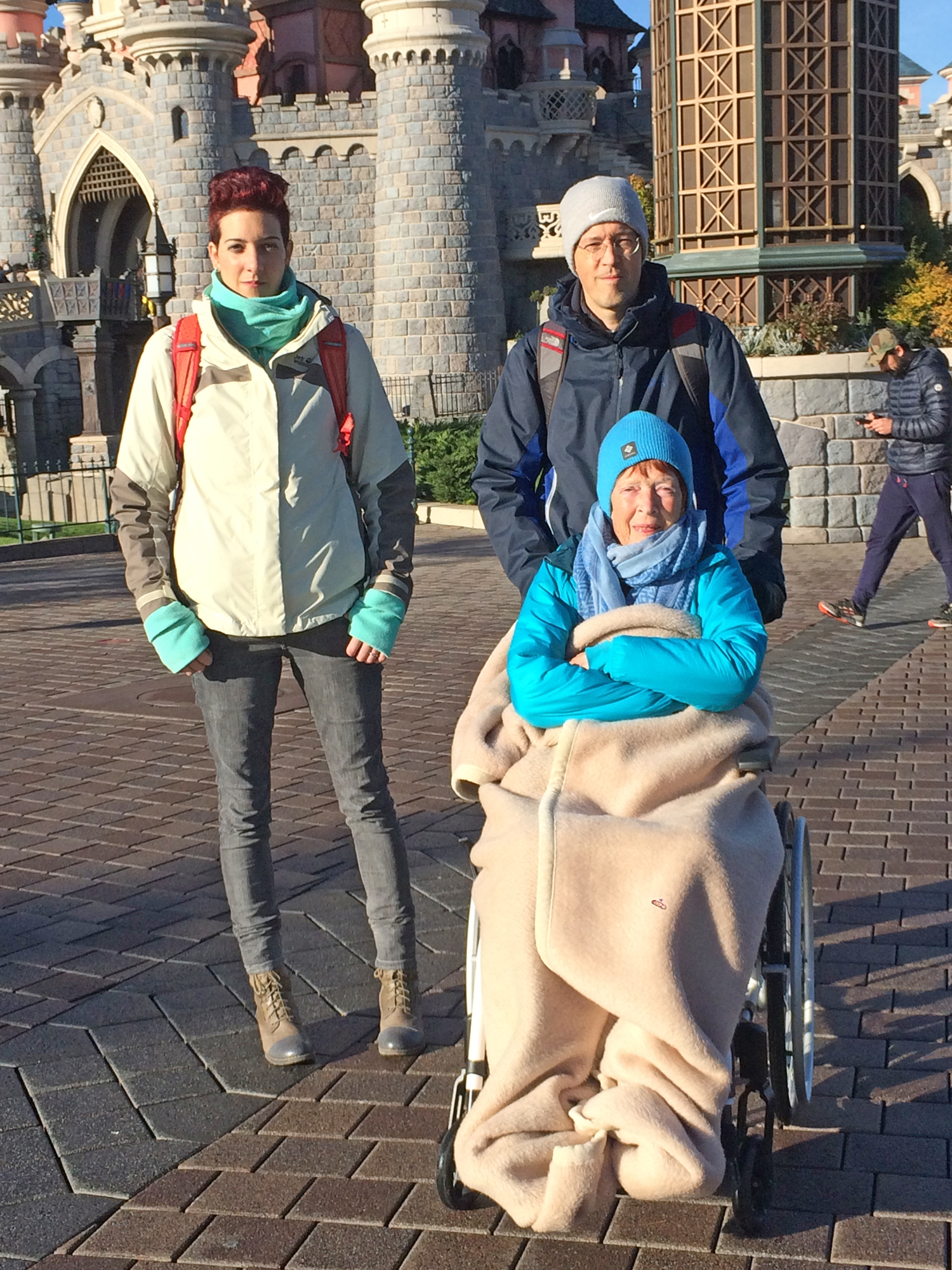
Obituary Colette Heirendt (1945 - 2018)
Francis Massen, with the help of Florence Massen (PDF version)

Foreword:
This certainly is the most difficult and painful obituary for me to write, as it concerns my spouse for over 50 years. So please pardon me if I lose some detachment and objectivity from time to time.
1. Biography
Colette Heirendt was born in Eschwege, Germany the 7th January 1945, during the last year of WWII. Her father Henry Heirendt worked as a surgeon in a military hospital. He had met Colette's mother, the chirurgical nurse Maria Braun, while working at a Marburg hospital and the couple married in 1943; this was not without problems during these war years, as Henry Heirendt was a Luxembourgish and Maria Braun a German citizen. With a big strike of luck, Henry Heirendt was spared transfer to the Russian front and found work in Eschwege. Colette was the first child of a family which finally counted 3 children, all girls. After WWII, the family came back to Luxembourg, where the father took up work as a practitioner in Useldange; the family inhabited a part of the windy and badly heated castle of Useldange, lent to them by the mayor of Useldange. As the father's health did not allow to continue the strenuous practitioner work, he went back to study and specialized in pneumology. He found his final workplace at the Sanatorium in Vianden, where the family inhabited one of the staff apartments. During the last years before retirment, the father occupied the position of director of the Sanatorium.
Colette went to primary school in Vianden, and after 6 years started her secondary school years at a boarding school in Luxembourg City. This girls-only institution was managed by catholic nuns, and the rules regulating the behaviour of the girls were very strict. Colette had strong difficulties to restrain her free will in this, as she told me, oppressing atmosphere, so she persuaded her father to move her to the much more liberal Pensionnat Sainte Marie in Luxembourg-Limpertsberg. This was also a catholic boarding institution run by nuns, but less strict, and the girls went to the Lycée de Jeunes Filles, a public and secular gymnasium in Luxembourg City. The curriculum of secondary education for girls was not famous for its scientific touch, but nevertheless Colette choose to study mathematics and physics after finishing her baccalaureat in 1964. She wanted to become a secondary school teacher in these matters. At the time the access to this profession was heavily regulated, and candidates would spend the first year at the Cours Supérieurs in Luxembourg and later move on to a foreign university, while taking all exams relevant to their studies in Luxembourg. I met Colette in the fall of 1964 at the Cours Supérieurs, where she was one of the 4 girls in a class of 15 students. She was a somewhat shy person, very agreeable to talk to and very beautiful. So no wonder I fell in love and we became a couple for a period that extended finally to 54 years.

1965: Colette as a student in the mathematics/physics department of the Cours Supérieurs in Luxembourg City.
Colette missed her first try at the exams of the Cours Supérieurs, which was not surprising considering the minimal mathematics taught during her lyceum years at an all-girls school. During the year before being allowed a second try, she followed a crash course in primary education and worked as a teacher in a primary school in Harlange (in the Northern region of Luxembourg). There she managed a bunch of children comprising 6 different classes at the same time, a situation unimaginable today. The next year both of us went to the Université de Liège (ULg) in Belgium, where we finished our studies and came back to Luxembourg to successfully complete our final exams. We started working in the fall of 1968, and married the 7th November 1968.
Colette first worked at the Professional School in Ettelbruck, and then moved on to the "Hotel School" in Diekirch, later called "Lycée Technique Hôtelier Alexis Heck (LTHAH)". This school teaches cooking, service, hotel- and restaurant-managing skills etc. Colette taught many different subjects, as mathematics, physics, accounting and computing. From the first year on she was a member of the very small crew responsible for class- and room-scheduling drawing up the schedules by hand and later on using specialized software (the famous UNTIS suite of programs). Later on she, along with a group of other people, helped out the directorate in many different matters, and she was responsible for establishing and managing the computer infrastructure of the school. She started her retirement in 2009, continuing to help out at the LTHAH in an unofficial manner from time to time.
Colette became the mother of 5 children, losing one boy as toddler to sudden child death. Workload with 4 children (one boy, 3 girls) was heavy, but we always were lucky in having help in the form of a housekeeper/nanny.
2. Sports and leisure, family life.
Colette was one of the first members of the Groupe Spéléologique Luxembourgeois (GSL), Luxembourg's first caving club. She participated in one of the major enterprises of the GSL: mapping Luxembourg's largest maze cave, the Moestroff Cave. She introduced me to the GSL, and from then on we always went underground together.
1973: Colette wearing the GSL sweater with first child Gilles in a Belgian cave.
At the time, material was primitive: ropes were used for rappelling and folding ladders for ascending and descending; the single rope technique did not yet exist. During a couple of years we both were secretaries of the GSL. Colette and I both loved hiking, and together with good friends (like Claude Asselborn and Claude Lanners) we enjoyed some memorable hikes, as the Tour du Mont Blanc, the Tour du Queyras etc... We were (something rather unusual in Luxembourg, but much more common in Germany and France) decided naturists, spending many vacations in the nude with our children in French resorts, and later visiting once a year a resort in Florida. From the end of the 90's on, as the burden of child-care became less, we flew nearly once a year to the US to hike in the Western National Parks. Our last trip to the US was in 2017; we went to see the total solar eclipse in Ontario (Oregon) and hiked around Mount Rainier, Shasta and visited one of our favorite spots, the Lassen Volcanic National Park in California. Colette's health problems did not allow traveling over long distances afterwards, so this would be our last trip together to the US.
3. Computarium work.
The Computarium was not built in one go, but took some time to finalize. Serious infrastructure work started in 2009 and extended over more than 2 years. Colette was a member of the Computarium from the very beginning, and was very influential in guiding our choices concerning displays and museal questions. Colette helped in ironing out and streamlining many quick but awful and badly thought-out decisions. She also became a private collectionner of mechanical calculators, and gathered a very beautiful set of machines, some very rare and most in an excellent visual and working state. She helped out at most public workshops and/or exihibitions.
2010: Vintage Days 22-23 workshops. From right to left: Colette Heirendt, Jean-Claude Krack, Claude du Fays, Claude Baumann, Francis Massen.
4. Health problems.
Contrary to me, a life-long sufferer of asthma and related health problems, Colette had a robust health. So it came as a blow when she was diagnosed with breast cancer in the fall of 2012. We nevertheless decided to make our planned to trip to Australia, visiting our youngest daughter who spent some time at the University Melbourne doing doctoral research. Once back in Luxembourg she suffered through chemotherapy, double mastectomy, and again chemo- and radiotherapy. Her cancer (an especially nasty lobular cancer) seemed to stay dormant for the next 2 years, until a PET scan showed that it had spread to many parts of her body. Colette knew very well that this meant living with an incurable disease, and spent the last remaining years with admirable courage. We did not change our living style for as long as possible, up until the last couple of months where her cancer caused extremely serious edema and she was forced into a wheelchair. The last month of her life was spent at home, with intensive palliative care. We nevertheless managed to organize a family gathering for our 50th marriage anniversary at the end of October 2018.
Colette's last wish was a visit to the Disney Resort in Paris, to which we had made many trips with our children and grandchildren. Against all odds we managed to complete this endeavour (13-14 Nov. 2018) and she enjoyed it very much.

2018, 14th November: Colette with daughter Florence and son Gilles at the Euro Disney resort, one month before her passing away.
Back home her health worsened rapidly and in the morning of December 17th she was driven to the hospital by ambulance, where she passed away in the evening surrounded by her children and husband.
5. Conclusion
Colette was a very eager worker, had a sharp spirit, and was very knowledgeable in many matters outside of her professional specialties, such as botanics, history, geography and so on. She was an extremely lovely partner and good mother. She was a good organizer, and without her our complicated life, due to the fact that we had 4 children and both worked full-time jobs, would not have been possible. Her courage as a cancer sufferer was admirable, and moments of depression were very rare. Despite her declining health, she tried hard not to be a burden, be it in the emotional or the practical sense. I am sure that many friends, colleagues and former students will miss her as much as I do.